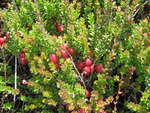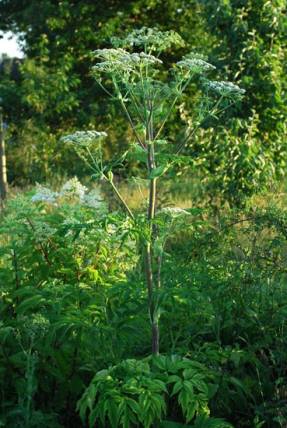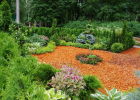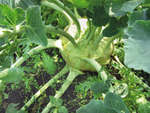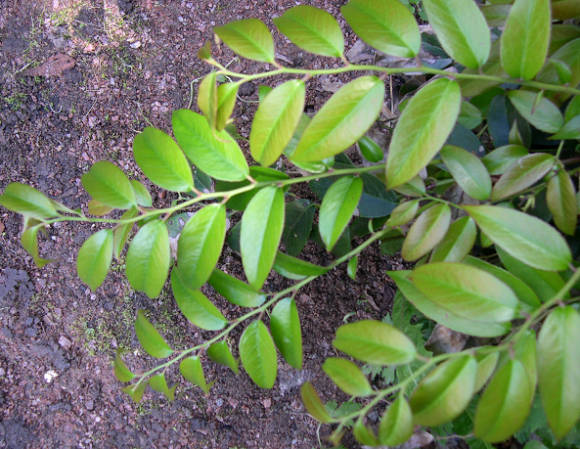 |
Actions are very demanding on the choice of landing site and conditions of detention. Favorable conditions for the growth and development of action can be created in a semi-shaded garden under the crown of large trees, where air humidity and diffused light are preserved. Bushes are planted either on the south side of the building, or in a place protected from cold northerly winds.
Deytsia prefer fresh fertile soils, loves clayey areas with moderate moisture. For her, the close standing of groundwater is unacceptable. On infertile soils, there will be no lush flowering. Actions are resistant to pests and are very rarely affected by diseases.
The most favorable planting time is spring. Planting holes are dug 35-40 cm deep, and on poor soils - 15-20 cm deeper. The bushes are planted at a distance of 1.5 m from each other. The main fertilization is carried out before planting. The approximate rate of fertilization in each pit is 1 bucket of compost and 100 g of nitrophoska.
During the dry season, they need watering. Young plants are especially sensitive to lack of moisture in the soil during hot periods of summer. With sufficient soil moisture, shrubs bloom for a long time and beautifully. It is better to water the bushes of action less often, but more abundantly, well wetting the soil horizon to a depth of 50 cm. The approximate watering rate for an adult shrub is 30-40 l / m2.
 |  |
Shelter for the winter
The easiest way to cover the action in winter is to mulch the trunk circle of the bush with fallen leaves, straw, and not a layer of peat. For small bushes, you can use the cardboard boxes available on the farm, wooden boxes and branches of coniferous spruce branches. Young seedlings and seedlings of action are especially in need of insulation. Already at the end of autumn, at negative air temperatures, when the soil freezes to a depth of 3-5 cm, the plants need to be tightly covered with coniferous spruce branches or a layer of dry foliage. Heat-loving varieties of action should be wrapped for the winter with burlap or thick kraft paper, on top with modern covering material. On warm spring days, already in April, you need to be on time with the removal of the shelter, which will slow down the growing season, which begins in late April or early May, and limit the growth and development of action.
Pruning
One of the most important maintenance activities is annual pruning. If the shoots are damaged by frost, then young leaves will not appear on them in the spring. All dry and poorly developed shoots need sanitary pruning.
Reproduction
 |
The action is propagated by green and lignified cuttings, layering, root suckers, dividing the bush, as well as seeds.
The most common breeding method is green cuttingswhich starts in June. Only large, well-developed shoots in a mature state are suitable for cuttings. To stimulate root formation, you can use "Kornevin", which is not difficult to use, powdering the lower end of the cutting. The containers are filled with light nutrient soil, half mixed with river sand. A layer of sand 2-3 cm thick is poured on top. The cuttings are planted slightly obliquely, deepening into the ground by 0.5 cm. The boxes are placed in hotbeds and greenhouses, covered with plastic wrap. Rooting of action cuttings is 80-90%. Rooted cuttings can be transferred to the ground, but in the first winter they need to be covered with a leaf or coniferous spruce branches. In the spring they are planted for growing.
For reproduction woody cuttings shoots are harvested during the dormant period of the plant, in late autumn. Cuttings are cut 15-25 cm long with three or five buds. They are collected in bunches of 10-15 pieces, tied and placed in wet sand, falling asleep almost completely. In this form, they are stored in basements until spring at temperatures close to zero. In the spring they are planted and raised like green cuttings.
It is also possible for action dividing a bush... A heavily overgrown shrub is dug up and divided, together with the root system, into 2-3 parts. At the same time, old thickened branches are cut off. The planting material is not allowed to dry out and is planted as soon as possible in a new place in open ground. If the action bush gives root shoots, then in the spring it is carefully dug up and transferred to the intended purpose.
The action is multiplied and seeds.Small seeds ripen in late September or October, they are removed from the capsules and stored until spring. Sowing seeds is carried out indoors, using film or glass greenhouses with artificial heating. For sowing seeds, light fertile soil is prepared by mixing humus, peat and river sand in equal parts. Seeds are sown superficially (to a depth of 0.5 mm), sprinkled on top with a thin layer of clean river sand, which prevents the appearance of a soil crust. For successful germination, seeds, especially at first, need constant moisture. From above, the container is covered with glass or transparent film. Seedlings appear in 1-1.5 months. Seedlings with developed leaves carefully dive into open ground.
About agricultural technology - in the article Action: cultivation, care and reproduction.
Photo by the author

